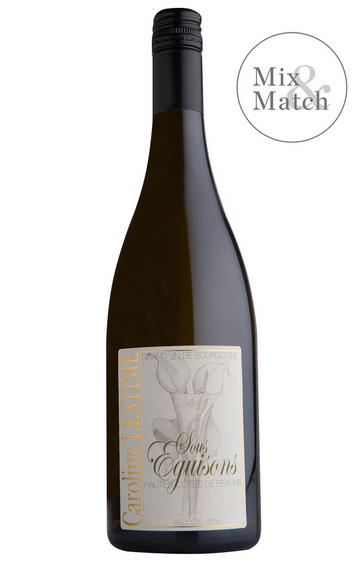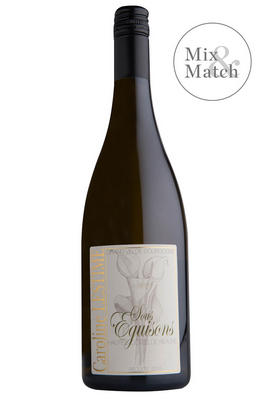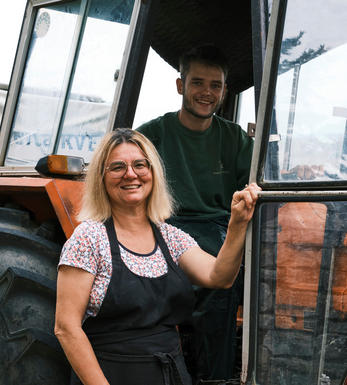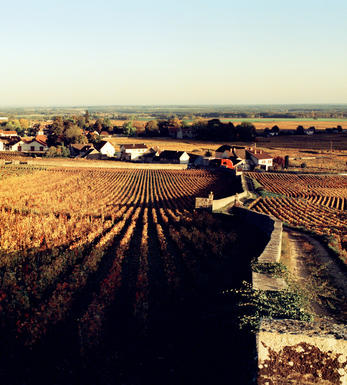
2018 Bourgogne Hautes-Côtes de Beaune, Sous Eguisons, Domaine Jean-Noël Gagnard

About this WINE

Domaine Jean-Noel Gagnard
Caroline Lestimé took over from her father, Jean-Noël, in 1989, though Domaine Jean-Noël Gagnard still retains his name. The estate’s modern reputation has very much been built by Caroline, who has made it her responsibility to develop the many expressions of Chassagne Montrachet terroirs across her range.
About Domaine Jean-Noël Gagnard
There are 12 different Premiers Crus to choose from; some now carry their own identity, having previously been offered under the larger Morgeot appellation. She has bought more land in Chassagne when available and affordable, and there’s a very well-situated white wine vineyard in the Hautes-Côtes, sold under the L’Estimée brand. Some very attractive reds from Chassagne round off the range.
In the vineyard
The vineyards are all organic, now certified; Caroline plans to put that status on her labels from the 2019 vintage.
In the winery
A little perspective is always an asset with Caroline’s wines: it’s not her style to manipulate or force, and any perception of dumbness is always mitigated once in bottle. Caroline is always very attuned to her wines’ progress during élevage.

Burgundy
Burgundy never quite achieved its political ambitions of being a kingdom in its own right, but for many, the region produces some of the most regal red and white wines in the world.
In Burgundy there are 100 different appellations, numerous individual vineyards and more than 3,000 individual producers. Around 15 million cases are produced annually from 26,500ha of vines in Burgundy, which is usually sub-divided into five regions: Chablis in the Yonne department; the Côte de Nuits and Côte de Beaune in the department of the Côte d'Or; and the Chalonnais and Mâconnais in the Saone-et-Loire.
The world's most famous white wine grape may have originated in Burgundy, where there’s a village called Chardonnay (near Mâcon). This marvellous, full-bodied grape responds well to barrel ageing and can produce wines of great complexity that can age for decades. More often than not though, in recent times, the wines are better enjoyed in their youth. The simpler white wines of Chablis to the north, and the Mâconnais in the south, are usually made in stainless steel to preserve freshness.
The heartland for white Burgundy is the Côte de Beaune with its three great villages, Meursault, Puligny-Montrachet and Chassagne-Montrachet. Here the vineyard classification system really comes into its own. On the flattest land, the wines will be classed only as generic Bourgogne Blanc; as the slope begins to rise, the wines are designated by the name of their village. At mid-slope, the finest vineyards (whose wines are bottled separately) are categorised as Premier Cru (eg Les Charmes) or Grand Cru (Le Montrachet).
Though attractive wines can be found in the Côte Chalonnais (Mercurey, Givry), the great red wines of Burgundy are found in the Côte d'Or. The line of magical villages which constitutes the Côte de Nuits, Gevrey-Chambertin, Morey-St Denis, Chambolle-Musigny, Vougeot, Vosne-Romanée and Nuits-St Georges is practically a roll call of great names. The Côte de Beaune competes through such gems as Volnay and Pommard, which are adjacent yet contrasting villages: lacy elegance for the wines of Volnay, while sturdy and more structured in those from Pommard.
Whereas Burgundy used to be considered a veritable minefield because of the complexity of choice, these days it is more of a playground for the adventurous wine lover, thanks to the vast increase in number of quality-conscious, properly-trained producers.

Chardonnay
Chardonnay is often seen as the king of white wine grapes and one of the most widely planted in the world It is suited to a wide variety of soils, though it excels in soils with a high limestone content as found in Champagne, Chablis, and the Côte D`Or.
Burgundy is Chardonnay's spiritual home and the best White Burgundies are dry, rich, honeyed wines with marvellous poise, elegance and balance. They are unquestionably the finest dry white wines in the world. Chardonnay plays a crucial role in the Champagne blend, providing structure and finesse, and is the sole grape in Blanc de Blancs.
It is quantitatively important in California and Australia, is widely planted in Chile and South Africa, and is the second most widely planted grape in New Zealand. In warm climates Chardonnay has a tendency to develop very high sugar levels during the final stages of ripening and this can occur at the expense of acidity. Late picking is a common problem and can result in blowsy and flabby wines that lack structure and definition.
Recently in the New World, we have seen a move towards more elegant, better- balanced and less oak-driven Chardonnays, and this is to be welcomed.


Buying options
Add to wishlist
Description
This cuvée comes from a 10-year-old 1.5-hectare vineyard at La Rochepot, above St Aubin. The white limestone soils give a lovely cool edge to a wine with some exotic notes. The fruit was harvested on 5th and 10th September, with half the blend aged in barrel (20% new). Drink now to 2022.
wine at a glance
Delivery and quality guarantee